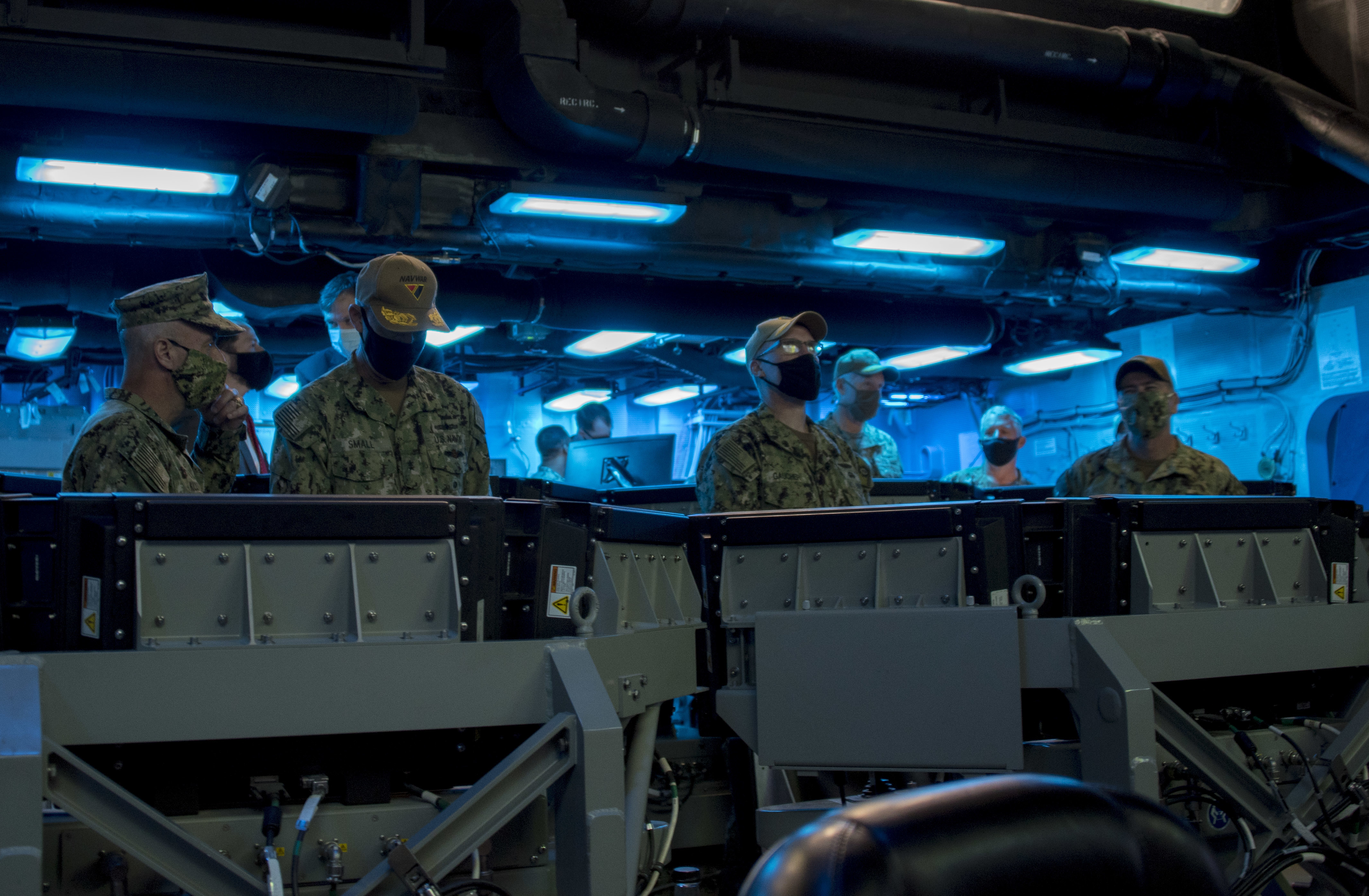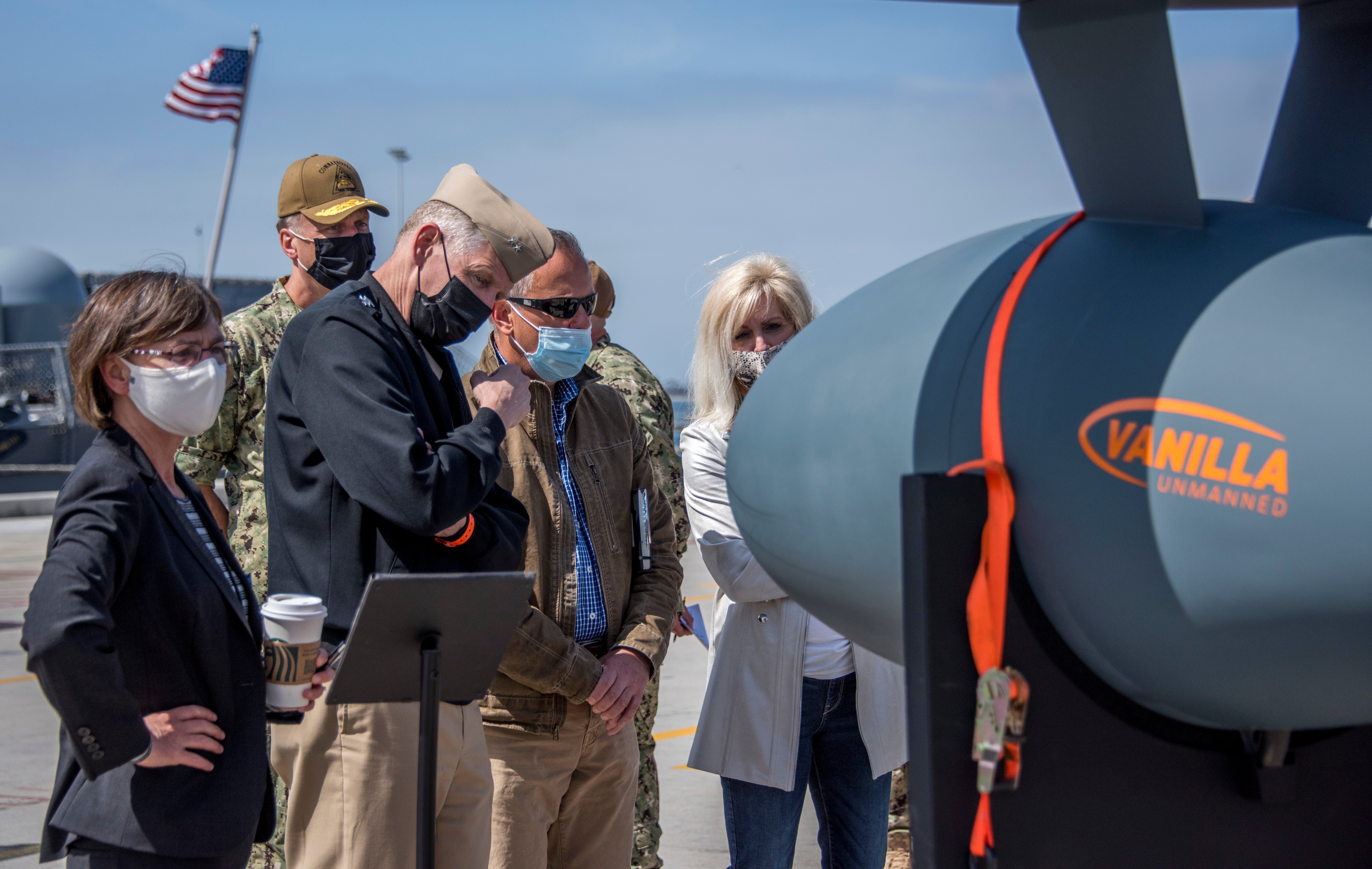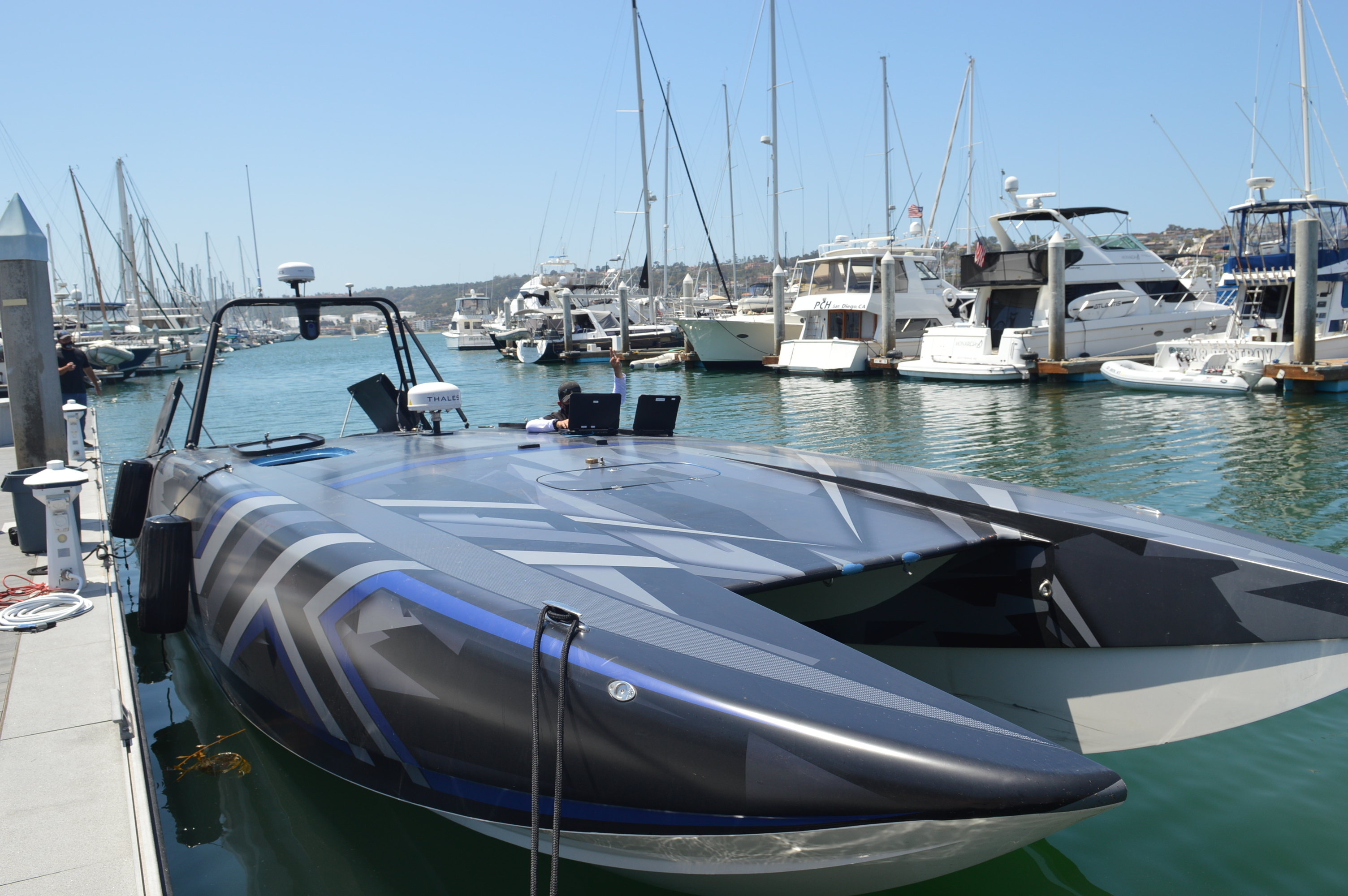
The Navy today kicked off its first-ever exercise using manned and unmanned systems together in the air and the sea, in a first test of what a future hybrid fleet of crewed and uncrewed vessels could look like.
The Navy has conducted testing for individual systems as part of the acquisition process and during ongoing prototyping efforts to help develop unmanned surface vessels requirements and concepts of operations. But as the service turns its attention to what connects these platforms together to operate as a single fleet – the communications networks, the battle management aids, the common control systems, the data formats and more – this week’s exercise will be the first demonstration of where the Navy is today and what work remains to be done to achieve the vision of a manned-unmanned hybrid fleet.
The Unmanned Integrated Battle Problem 21 is led by U.S. Pacific Fleet and executed by U.S. 3rd Fleet, the Navy announced and will run through April 26.
USNI News previously reported that Zumwalt-class destroyer USS Michael Monsoor (DDG-1001) would serve as a mothership for some of the unmanned platforms in the exercise, which include the Medium Displacement Unmanned Surface Vessels (MDUSV) Sea Hunter and Sea Hawk, the MQ-8B Fire Scout Unmanned Aerial Vehicle (UAV), the MQ-9 Sea Guardian UAV, small and medium unmanned underwater vehicles and more – including a research project called Super Swarm that is researching how to leverage and how to defend against a large swarm of small drones.
“Our unmanned systems are a great force multiplier for our Navy,” Acting Secretary of the Navy Thomas Harker said in a Navy news release, following his attendance at a distinguished visitor day on April 16 to see the participating platforms before the at-sea operations began.
“They bring a lot of capability to the Fleet.”

Photos from the DV Day and other pre-exercise events at the pier appear to show Vice Adm. Michael Moran, the top uniformed advisor to the assistant secretary of the Navy for research, development and acquisition; Chief of Naval Research Rear Adm. Lorin Selby; Dorothy Engelhardt, the director of unmanned systems for the deputy assistant secretary of the Navy for ships; Rear Adm. Doug Small, the commander of Naval Information Warfare Systems Command (NAVWAR); Rear Adm. Robert Gaucher, director of maritime headquarters at U.S. Pacific Fleet; and other leaders interacting with fleet sailors and industry representatives.
The photos also show industry representatives showing off the MANTAS T38 Devil Ray unmanned surface vehicle and the Vanilla Ultra Endurance unmanned aerial vehicle, though it’s unclear what role they will play during this week’s event.

Unmanned systems have been a constant talking point for the Navy over the past year, as they featured heavily in the service’s proposed long-range shipbuilding plan and in the tri-service maritime strategy – Advantage at Sea; Prevailing with Integrated All-Domain Naval Power – both of which were released in December, as well as Chief of Naval Operations Adm. Mike Gilday’s CNO Navigation Plan released in January. The Navy also released an Unmanned Campaign Framework last month with broad outlines for what the Navy wanted to do with unmanned and what investments were needed to achieve that vision.
“Building off advances achieved over the past decade in unmanned aviation, Pacific Fleet is answering the Chief of Naval Operations’ drive to put the Navy’s Unmanned Campaign Plan into action,” Gaucher said in a Navy news release.
“Furthermore, by exercising our full range of unmanned capabilities in a Pacific warfighting scenario, UxS IBP21 directly supports U.S. Indo-Pacific Command’s warfighting imperative of driving lethality through experimentation.”
“The overall goal is to integrate our unmanned capabilities across all domains to demonstrate how they solve CNO and Fleet Commander Key Operational Problems,” Gaucher added.
“To get after these problems, UxS IBP21 will include maneuvering in contested space across all domains; targeting and fires; and intelligence, reconnaissance and surveillance.”
The news release notes that lessons learned from the exercise “will directly inform warfighters, warfare centers and developers to further incorporate unmanned capabilities in day-to-day Fleet operations and battle plans.”





